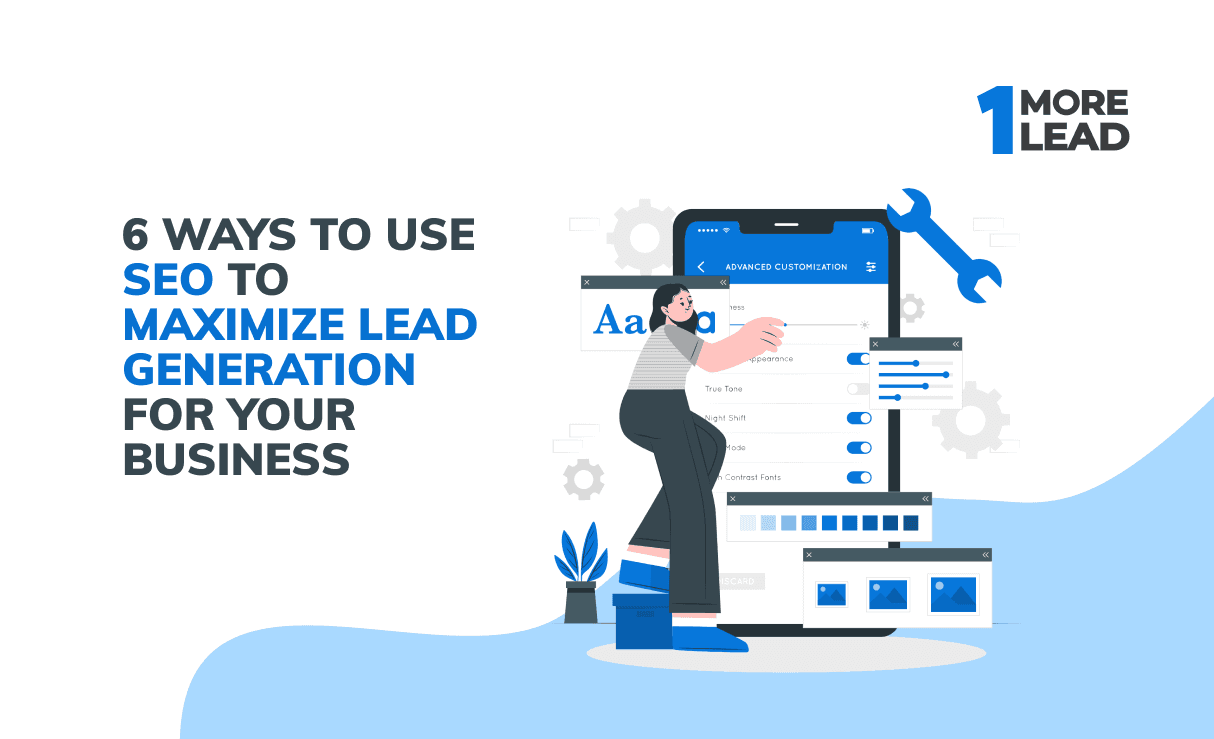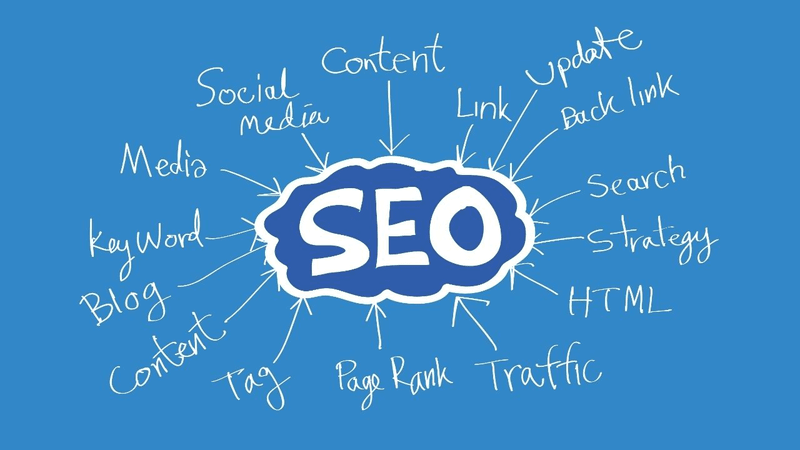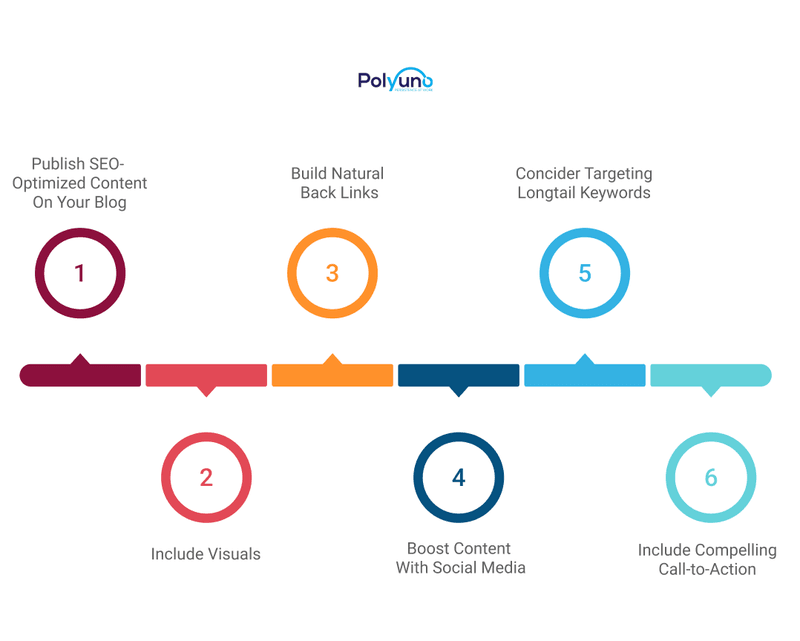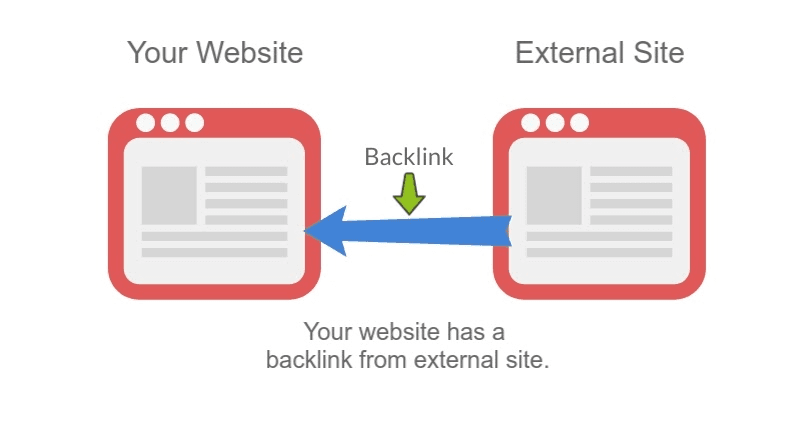
The majority of modern businesses today invest time and effort in SEO and lead generation. Although both are key aspects of a marketing strategy, their combined effect is greater than their individual effects.

You want to skyrocket your business success. There's just one problem: you keep getting time-wasters while wanting more leads.
What to do now? The only choices you have in terms of lead generation are to:
Would it not be great if there were a third option? What if SEO could help you achieve better lead generation? Then you would be on the right track.
It's important to understand that an effective marketing plan involves both search engine optimization (SEO) lead generation. In this article, we will explore ways you can optimize SEO lead generation and achieve your business goals. Keep reading.
The term SEO refers to Search Engine Optimization. A search engine optimization strategy allows you to boost the rank of your website in the search results of Google and other search engines. Consequently, your website will be more likely to be found by people who are searching online.

This is often seen as the most complex part of the process. What methods do you use to get found? It's pretty straightforward. Post content!
Create high levels of content on your website and optimize them for your researched keywords to increase your visibility.
An SEO campaign revolves around improving organic (or natural) search rankings. SEO is a vital component of any marketing campaign you undertake if you want to increase traffic to your website.
The purpose of lead generation is to identify prospects who are interested in your product or service and convert them to sales.
Lead generation campaigns are designed to turn customers into customers by combining paid advertising, landing pages, calls to action, and relevant content (lead magnets).
Lead generation campaigns are essential to the success of any B2B or B2C company. In today's competitive online world, effective lead generation campaigns are essential.
In the world of SEO, higher rankings translate into more affordable, immediate, and significant returns on investment. Searchers tend to click the first result on the page. On average, most users will only click the first five links of the SERP (Search Engine Result Page) and will not visit page two.
Therefore, it is vital that you build an SEO strategy to place you high on SERPs. When your website is optimized for search engines, you will attract attention and benefit from the benefits of SEO.
By using SEO, you will improve your website's visibility in search engines. A good position and visibility in search engine results can increase traffic to your website. In turn, this leads to more leads and customers - and eventually more sales and growth for your business.
The trustworthiness of companies with strong SEO strategies and content is also higher. The more informative and high-quality the content, the more reliable the company will be. A high ranking on search engine results pages is generally considered a sign of high quality and reliability, increasing your credibility.
Additionally, you can use SEO to put your website above your competitors. The first page of Google search gets over 90% of all traffic. So if your competitors are on the first page, you can't afford to miss out.
Utilizing the right SEO tactics can improve your rankings, make you more visible to your audience, and increase lead generation.
The term SEO content can be better understood if it's broken down into its basic components:
As a combination of these two concepts: SEO content is any content created specifically to attract search engine traffic.

The importance of SEO in any marketing plan is evident from the fact that companies with an SEO-ready blog website rank higher in searches. An SEO-friendly blog allows your business to succeed in attracting leads, providing information about products and services, answering customer questions and complaints, boosting conversions, and collecting feedback from target consumers.

Building an active blog with optimized blog posts is an effective way to use SEO to get more leads. The best websites have an active blog and optimize blog posts.
For search engine optimization, it is important to post regularly to keep your website's content fresh and new. Due to the constant change in Google's algorithm, it is imperative that you keep your website up to date. Your website will rank low in search engine results if it has no data or outdated data.
You can optimize your blog for search engines by following these steps:
If you plan to generate traffic from search engines, you should conduct keyword research before writing your article. By doing so, you can write about topics (or niches!) that people are already researching - in other words, choose keywords that have a certain amount of search volume already.
By researching keywords, you can incorporate them into your blog headline and through the content. Make sure not to stuff your article with keywords, as this could result in Google penalizing you.
You must create content consistently in order to maximize the effectiveness of your SEO efforts. It is crucial to regularly publish new content on your website in order to rank well in search engines and entice users to convert.
Content posted frequently allows Google to determine how active and healthy your business is. It is regarded as an ongoing source of value, which encourages users to interact with you.
Your content will be easier to scan if you use H2, H3, and H4 headings. You'll also ensure that Google understands the purpose of your content easier.
Content optimization isn't about adding keywords. Incorporating keywords into your content will not improve your online visibility.
You need to create content that is not only valuable to your readers but is also easy to understand. Write content that is engaging, compelling, and easy to understand.
Modern search engines consider more than just keywords when delivering results. Relevance and intent are increasingly important.
You should therefore produce high-quality content in your area of expertise. Keep in mind what your searchers are looking for. It is vital that you consider SEO when creating your blog if you wish to grow consistently and generate new business opportunities.
Certain keywords are worth more in Google searches with visuals. Search engine results pages frequently feature images and videos.

For your blog post's visual items to appear in an image pack or video snippet, original images, videos, and alt text are required.
The alt text of your image or video greatly influences whether or not it will appear in search engine results and how high it will rank. The presence of alt text on your website helps screen readers provide a better experience for visually impaired individuals.
Link building involves acquiring links from other websites to your own website. They facilitate navigation between web pages. Furthermore, they can help search engines crawl each page on your site and the entire web.

The more links back to your site you include in your post, the better the chance of your article being picked up by another website.
You can encourage content sharing by embedding infographics and videos on your site while linking back to the original. Content that is great increases sharability and the chances of it being linked to by other sites, so be sure to create great content!
With the help of social media, you can extend the reach and popularity of your content. This is also a great way of attracting leads as it leverages the wide reach and targeting capabilities of social media.

Use engaging descriptions and call-to-actions in each new article posted on social media sites and in forums. A share button should also be on each of your blog posts since the power of social media lies in sharing.
The keywords you use in your social network posts can also be very useful since they give your post an SEO advantage and help your followers understand what you're saying about a certain topic or product.
The goal of optimizing your blog for keywords is not to stuff your posts with keywords. Including keywords, as much as possible for the sole purpose of ranking highly in organic search is now considered keyword stuffing that can harm your SEO.
This also results in a poor reader experience, which search engines increasingly prioritize to ensure you're answering visitors' questions. If you want your content to feel organic, you should use keywords in a way that does not seem forced.
It is best to use one to two long-tail keywords per blog post. While you can use more than one keyword in one post, make sure it is focused enough on one or two keywords to improve search engine optimization.
If you want your blog posts to convert, get more engagement, or sell a product, you'll need an enticing CTA. You should use a CTA to encourage your readers to take the next step on your blog.

Make it easy for potential customers to find information, buy your products, and contact you. A clear call to action (CTA) should appear on every page on your website, whether it's an informational page or an educational blog post. An effective call to action should describe exactly what the user will gain by following your instructions.
There are several ways in which you can measure the SEO success of your digital marketing efforts. A key metric is SEO ranking.
Fortunately, there are a number of tools that provide you with easily understandable reports that let you keep track of those metrics.
By monitoring your efforts, you can ensure your content is SEO-friendly. Monitoring and reviewing your SEO efforts regularly will help you identify SEO-related issues. Additionally, this may allow you to see if your SEO efforts are actually driving relevant SEO traffic to your business' website.
Getting a true understanding of SEO success requires you to measure it over time. Consistent SEO efforts are key to achieving long-term success with SEO. The goal is to make changes to your website to improve search engine rankings over time.
Lead generation through SEO is simple: publish original content targeting high-intent keywords twice a week and watch your leads roll in. Putting it into practice is harder. It takes a team of experts and a great deal of time and effort to choose the right keywords, analyze search intent, and write high-quality content for each one.
Here's where OneMoreLead comes in.
OneMoreLead features a database of more than 40 Million 100% verified B2B prospects to search from, allowing you to easily find the prospects you are looking for. In only 60 seconds you will have an opportunity to qualify the right lead for your business.
So what are you waiting for? Sign up today!